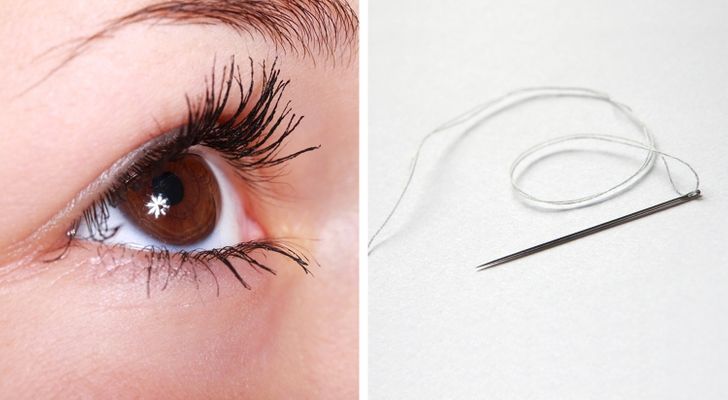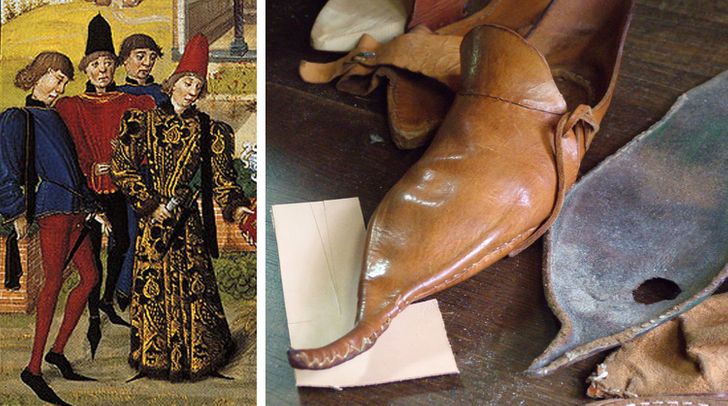The fashion industry is responsible for forming our views based on what’s in style at the moment. However, people in the previous centuries were much more controlled by fashion than we are today. This means that they followed trends and cultural practices that were uncomfortable and dangerous for their well-being.
Here’s a list of dangerous beauty and fashion trends that people used to practice not too long ago, even though they knew the risks.
- FOOTBINDING IN CHINA
 Foot binding was a beauty/fashion custom that women practised in China from the Song Dynasty (960 — 1279) until 1912, when it was officially banned. During that time, women would bend the bones on their feet to fit them inside these traditional lotus shoes about 4 in (10cm) long. The custom began between the ages of 4 and 9, and girls used to wrap their feet with bandages daily for about 2 years to get their foot to take on the desired shape and size.
Foot binding was a beauty/fashion custom that women practised in China from the Song Dynasty (960 — 1279) until 1912, when it was officially banned. During that time, women would bend the bones on their feet to fit them inside these traditional lotus shoes about 4 in (10cm) long. The custom began between the ages of 4 and 9, and girls used to wrap their feet with bandages daily for about 2 years to get their foot to take on the desired shape and size.
- OHAGURO IN JAPAN
 The colour black has always been considered beautiful in Japan, and that’s why women used to dye their teeth black. Married women were obligated to dye their teeth right after their marriage. Iron filings were inserted into a cup of tea until the iron oxidized and the tea would turn black. Then, some spices were added to cover the strong smell, and women would drink this often to keep their teeth black. It is said that this practice was actually beneficial for their dental health. This custom lasted for thousands of years until it faded at the end of the 19th century.
The colour black has always been considered beautiful in Japan, and that’s why women used to dye their teeth black. Married women were obligated to dye their teeth right after their marriage. Iron filings were inserted into a cup of tea until the iron oxidized and the tea would turn black. Then, some spices were added to cover the strong smell, and women would drink this often to keep their teeth black. It is said that this practice was actually beneficial for their dental health. This custom lasted for thousands of years until it faded at the end of the 19th century. - TAPEWORM DIET
 During the early 1900s, it was popular among women to go on diets using tapeworm pills. Each pill contained one tapeworm egg, which later hatched, grew inside their intestines, and ingested most of the food that this person ate. This practice helped women lose weight while not cutting down on their calories. The dangers of this diet were intestinal blockages and the formation of cysts in their liver, eyes, brain, and spinal cord.
During the early 1900s, it was popular among women to go on diets using tapeworm pills. Each pill contained one tapeworm egg, which later hatched, grew inside their intestines, and ingested most of the food that this person ate. This practice helped women lose weight while not cutting down on their calories. The dangers of this diet were intestinal blockages and the formation of cysts in their liver, eyes, brain, and spinal cord. - EYELASH EXTENSIONS
 An article published in 1899 suggests that a way for women to make their eyes more attractive was to add eyelashes. The method for doing this was to have them sewn in: a needle was threaded with long hairs taken from one’s head and then sewn to the extreme edges of the eyelid between the epidermis and the lower border of the cartilage of the tragus. Before the procedure, the specialist would clean the lower part of the eyelid thoroughly and rub it with a solution containing cocaine.
An article published in 1899 suggests that a way for women to make their eyes more attractive was to add eyelashes. The method for doing this was to have them sewn in: a needle was threaded with long hairs taken from one’s head and then sewn to the extreme edges of the eyelid between the epidermis and the lower border of the cartilage of the tragus. Before the procedure, the specialist would clean the lower part of the eyelid thoroughly and rub it with a solution containing cocaine.
- LARD FOR WIGS
 In the late 1700s, wigs were at the top of their game, and people would do anything they could to make them stand out. To curl them, they would use lard and hot tongs and then powdered them with lead. The hair would often go a long time without being washed, making it a friendly zone for lice and vermin. Many women used to wear cages around their heads to keep mice away from their heads during the night.
In the late 1700s, wigs were at the top of their game, and people would do anything they could to make them stand out. To curl them, they would use lard and hot tongs and then powdered them with lead. The hair would often go a long time without being washed, making it a friendly zone for lice and vermin. Many women used to wear cages around their heads to keep mice away from their heads during the night. - NECK RINGS
 The Kayan women of Myanmar start wearing heavy brass coils around their necks from the age of 5, and as they get older, they add more rings. Each woman has to carry a total of 11.5 kg in neck rings. Despite common belief, the coils don’t actually elongate the neck. They actually deform and push down the clavicle giving the illusion of a longer neck. This custom is still being followed today.
The Kayan women of Myanmar start wearing heavy brass coils around their necks from the age of 5, and as they get older, they add more rings. Each woman has to carry a total of 11.5 kg in neck rings. Despite common belief, the coils don’t actually elongate the neck. They actually deform and push down the clavicle giving the illusion of a longer neck. This custom is still being followed today.
- CRAKOWS
 Long-toed shoes have been in fashion in various periods in history. Still, Crakows were especially popular during the 15th century despite the heavy criticism from many people. The toes were filled with stuffing to keep their shape intact, but the lack of comfort resulted in their ban in 1465. Shoemakers were also not allowed to make them anymore.
Long-toed shoes have been in fashion in various periods in history. Still, Crakows were especially popular during the 15th century despite the heavy criticism from many people. The toes were filled with stuffing to keep their shape intact, but the lack of comfort resulted in their ban in 1465. Shoemakers were also not allowed to make them anymore.




